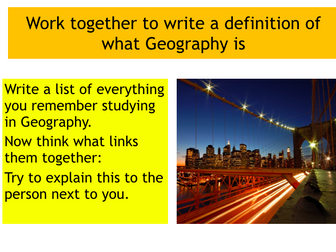Introductiongeography
Course Description
In Korea, paper fans are used in a traditional dance called buchaechum, which is often performed by groups of female dancers wearing colored hanboks (Korean traditional dress). Through dance choreography and movement, the fans express the beauty of nature by creating impressions of flowers, butterflies, and water. Introduction & Geography In your study of early man there are going to be many new terms and words for you to learn. Here are four very important vocabulary words to start you out. Approved/Revised/Updated: It is the student’s responsibility to address any questions regarding what might constitute academic misconduct to the course instructor for further clarification.

- Introduction to Geography: People, Places, & Environment, Sixth Edition introduces the major tools, techniques, and methodological approaches of the discipline through new applied visual features that engage students and reinforce real-world connections.
- Feeds, glossary flashcards, web links, self-study quizzes, and an eText version of Introduction to Geography.
The course is organized around an essential understanding.
Humans and the Earth are in a fine balance together.
Geography 12 is an excellent course that will allow you to look around at the world in which you are living and begin to understand all the process that take place that make it what it is – from the summer thunderstorm in your backyard, to the devastating disaster of the earthquake in Haiti. You will also look at the vastly different environments on earth -from deserts to tropical rainforests – and how and why they exist. As well, this course examines how human activity impacts the environment. The interactions between humans and the planet are woven throughout the course.

Geography Description 2013 – Word Document
The course has two distinct phases.

- First, you will be examining the pieces of the puzzle to get the picture of the earth by looking at the four main spheres – the lithosphere (how the earth is constructed, how it is created, and how it is worn down), the atmosphere (which has to do primarily with weather and climate), the hydrosphere (which invovles weather and climate and also how it works to erode the earth), and the biosphere (how various factors create different ecosystems or biomes).
- Second, you will be looking at how humans manage the environment, including waste management, energy use, water, pollution, and resource management and sustainability. This part of the course is where you pull all the pieces of the puzzle together and your work will focus more on projects.
The projects and the blog will reinforce and extend your thinking.
Contact me: kinden@sd91.bc.ca
or text 25- 996-3847
Course Description
The course is organized around an essential understanding.
Humans and the Earth are in a fine balance together.
Geography 12 is an excellent course that will allow you to look around at the world in which you are living and begin to understand all the process that take place that make it what it is – from the summer thunderstorm in your backyard, to the devastating disaster of the earthquake in Haiti. You will also look at the vastly different environments on earth -from deserts to tropical rainforests – and how and why they exist. As well, this course examines how human activity impacts the environment. The interactions between humans and the planet are woven throughout the course.

Geography Description 2013 – Word Document
The course has two distinct phases.
- First, you will be examining the pieces of the puzzle to get the picture of the earth by looking at the four main spheres – the lithosphere (how the earth is constructed, how it is created, and how it is worn down), the atmosphere (which has to do primarily with weather and climate), the hydrosphere (which invovles weather and climate and also how it works to erode the earth), and the biosphere (how various factors create different ecosystems or biomes).
- Second, you will be looking at how humans manage the environment, including waste management, energy use, water, pollution, and resource management and sustainability. This part of the course is where you pull all the pieces of the puzzle together and your work will focus more on projects.
The projects and the blog will reinforce and extend your thinking.
Contact me: kinden@sd91.bc.ca
Introduction To Physical Geography
or text 25- 996-3847
